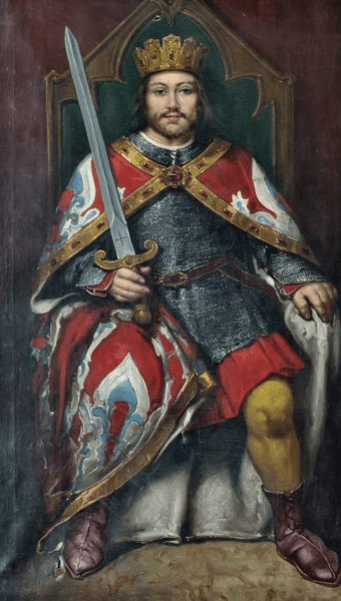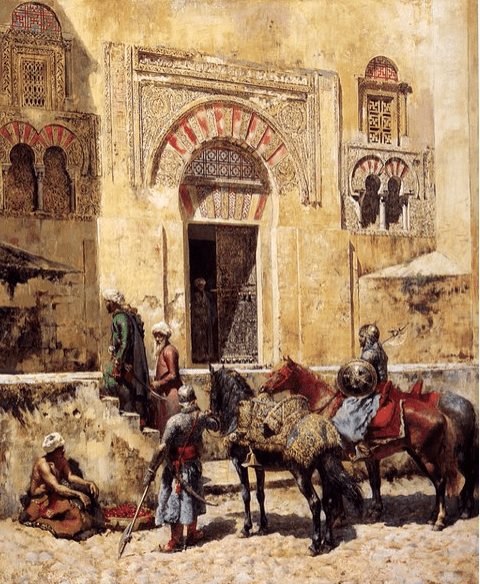Nicolás Roberto Robles
Badajoz, Spain

“Severe obesity restricts body movements and maneuvers . . . breathing passages become blocked and do not pass good air . . . these patients are at risk of sudden death . . . they are vulnerable to having a stroke, hemiplegia, palpitations, diarrhea, dizziness . . . men are infertile and produce little semen .. and women do not get pregnant, if they do they abort, and their libido is poor.”
– Avicenna, The Canon of Medicine
Famines were frequent occurrences in medieval Europe. In fourteenth-century France and England, the most prosperous kingdoms affected by the Great Famine, there was frequently not enough to eat, and life was a short and brutal struggle to survive. Surviving documents indicate there were poor harvests in one or more grains for twenty-three of the years between 1210 and 1350. About half of these poor harvests were bad enough to qualify as famines.1
Medieval Europeans inherited from classical antiquity, in particular from the Roman writer Vegetius, the idea that being overweight was incompatible with leading a military life. A member of the chivalry class was expected to afford having large amounts of food but to exercise self-restraint and generosity. Andreas Capellanus, in the twelfth century, made a distinction between the bodies of peasants and those of nobles. Likewise, the thirteenth-century writer Ramon Llull said that fat people were not fit to become knights. Nevertheless, obese kings were not so rare. Charlemagne was noted by his biographer Einhard as having quite a gut. His descendent, “Charles the Fat,” received his name from failing to defend France: he twice purchased peace with Viking raiders, including at the Siege of Paris (885–886), which led to his downfall. Louis VI of France was also nicknamed “The Fat.”
An extreme case study of obesity in medieval Spain was that of the tenth-century King Sancho I of Leon, nicknamed “el Craso” (the Fat). He was so morbidly fat that he could not ride a horse, wield his sword, bed his wife, or even walk. Supposedly he weighed up to 240 kilograms and ate seven meals a day, chiefly composed of rich meat dishes. He took the vacant throne upon Ordoño III’s death in 956, but two years later was deposed by the nobles led by the Earl Fernán González of Castile because of his extreme obesity. He was replaced by Ordoño IV from 958 to 960.

Islamic doctors enjoyed great prestige in the Middle Ages. Middle Eastern medicine preserved, systematized, and developed much of the medical knowledge of classical antiquity, including the major traditions of Hippocrates, Galen, and Dioscorides. It became during the post-classical era the most advanced medicine in the world, integrating concepts of ancient Greek, Roman, Mesopotamian, and Persian medicine as well as the ancient Indian tradition of Ayurveda, and made many advances and innovations. Islamic medicine and some aspects of classical medicine were later adopted in Western Europe when in the twelfth century the Canon of Avicenna was translated into Latin by Gerard de Cremona of Toledo, Spain. Avicenna (a Latin corruption of the Arabic patronym ibn Sīnā) was the greatest figure of Islamic medicine and his main work, The Canon of Medicine (Al-Qanun fi’t-Tibb), continued to be used as the standard medical textbook in the Islamic world and Europe through the eighteenth century. From the age of Avicenna through the present, more than 200 commentaries, annotations, abridgments, and translations in different languages of his work have been made. The first university in Europe to formally use the Canon as its foundation of medical education was the University of Bologna (the oldest European university) in Italy in the thirteenth century. Other European universities that taught the text included Leuven in Belgium, Montpellier in France, and Krakow in Poland. It is astounding that it was not received warmly in Islamic Spain. Possibly, Spanish physicians were intending to make the medical school of Andalusia independent from the medical school of the Bagdad caliphate. On the other hand, the Christian medical school of Salamanca (the oldest Spanish university) was very receptive to the medical work of Avicenna beginning in the Middle Ages.

It is not surprising that Queen Toda of Pamplona, the grandmother of Sancho I, decided to send Sancho to Cordoba, the seat of the Spanish caliphs, to be treated for his obesity. The caliph Abderraman III was cousin of Toda (both were grandchildren of Fortun Garces, king of Pamplona). In the Muslim court, the Jewish physician Hasday ibn Saprut treated Sancho by not allowing him to take more than infusions by straw for more than a month. At first the diet did not work, until Hasday discovered that Sancho ate in secret. Despite his rank as a king, he was bound hand-and-foot to prevent him from eating solid foods. His lips were even sutured, leaving only space for the straw. All of this was complemented with an exercise routine which he had to perform daily. He took hot baths every day to make him sweat and received massages to mitigate the sagging of skin in the process of weight loss. Finally, Sancho lost more than 100 kilograms in forty days.
This was not the only agreement with Abderraman III. A Muslim army took Zamora in the spring of 959 and the city of León in the second half of 960, and restored Sancho I as king. Ordoño IV fled to Asturias. Sancho I “El Craso” died in 966, although the exact date of his death is not known. He was poisoned, according to Sampiro’s chronicle, in the Galician monastery of Castrelo de Miño, when the rebel Count Gonzalo Menéndez gave him a poisoned apple. It is rather likely that he ate more than one apple. He was succeeded by his son, Ramiro III of León.
End note
- Dyer, C. “Changes in diet in the later middle ages: the case of harvest workers.” Agricultural History Review, 1988; 36, 21-37.
NICOLAS ROBERTO ROBLES is professor of Nephrology at the University of Extremadura, Badajoz.

Leave a Reply